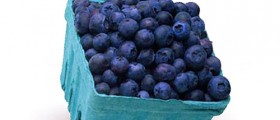
Strawberry is a flowering plant from the rose family. Strawberries are grown for their edible fruits, which are red in color and full of sweet juice. Strawberries are perhaps the most popular fruit in the world, commercially available all year round. Their peak season, and the period when they are most delicious, is from April through July. Besides strawberries that are cultivated, there are varieties that grow wild. Wild strawberries are usually much smaller, but with more intense taste. It is estimated that there are more than 600 different varieties of strawberries, Differing in size, texture and flavor.
Nutrition facts about strawberries
One serving of strawberries, of approximately 100 grams, contains only 32 calories. Strawberries are an excellent source of vitamin C and manganese. The serving of this size provides as much as 98% of recommended daily allowance (RDA) for vitamin C. 100 grams of strawberries are sufficient to satisfy 19% of RDA for manganese. They also very good source of dietary fiber and iodine as well as a good source of potassium, folate, riboflavin, vitamin B5, omega-3 fatty acids, vitamin B6, vitamin K, magnesium, and copper. The only bad point about strawberries is that a relatively large portion of the calories in this food comes from sugars. Strawberries are, therefore, best if consumed unsweetened.
Health benefits of strawberries
Like other berries, strawberries are rich sources of phenols, namely anthocyanins and ellagitannins. Phenols are responsible for bright red color of strawberries. They are potent antioxidants able to protect cellular structures and prevent oxygen related damage and resulting diseases. Phenols from strawberries are extremely heart-friendly. These beneficial compounds are shown effective against cancers and various inflammatory processes in the body. Strawberries are, thus, great preventive against rheumatoid and osteoarthritis, asthma, and atherosclerosis.
Another mighty compound from strawberries, ellagitannin, is found to be linked with decreased rates of cancer deaths. Scientists believe this phenol may be able to inhibit cancer cell proliferation.
Three or more servings of strawberries may lower one’s risk of developing age-related macular degeneration (ARMD), the primary cause of vision loss in older adults.
Strawberries are also extremely rich in vitamin C, nutrient that provides protection against inflammatory polyarthritis.
How to enjoy
Strawberries are very delicate and they should not be washed until right before eating or preparing a meal. Strawberries are best used in fruit salads and they can preserve most of their health benefits if properly stored and chilled. Slices of strawberries are also delicious additions to mixed green salad; they are tasty in plain yogurt or in orange juices. Mixed with cinnamon, lemon juice and maple syrup, strawberries are delicious topping for waffles and pancakes.

















Your thoughts on this
Loading...